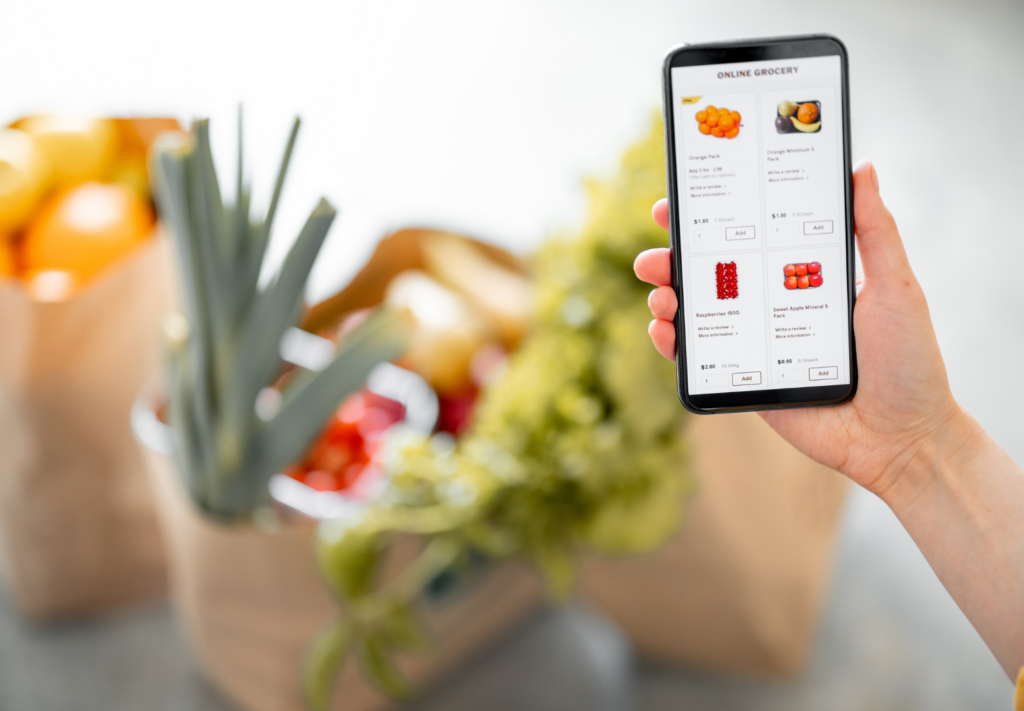10 Tips for Saving on Your Grocery Budget
go.ncsu.edu/readext?1079394
en Español / em Português
El inglés es el idioma de control de esta página. En la medida en que haya algún conflicto entre la traducción al inglés y la traducción, el inglés prevalece.
Al hacer clic en el enlace de traducción se activa un servicio de traducción gratuito para convertir la página al español. Al igual que con cualquier traducción por Internet, la conversión no es sensible al contexto y puede que no traduzca el texto en su significado original. NC State Extension no garantiza la exactitud del texto traducido. Por favor, tenga en cuenta que algunas aplicaciones y/o servicios pueden no funcionar como se espera cuando se traducen.
Português
Inglês é o idioma de controle desta página. Na medida que haja algum conflito entre o texto original em Inglês e a tradução, o Inglês prevalece.
Ao clicar no link de tradução, um serviço gratuito de tradução será ativado para converter a página para o Português. Como em qualquer tradução pela internet, a conversão não é sensivel ao contexto e pode não ocorrer a tradução para o significado orginal. O serviço de Extensão da Carolina do Norte (NC State Extension) não garante a exatidão do texto traduzido. Por favor, observe que algumas funções ou serviços podem não funcionar como esperado após a tradução.
English
English is the controlling language of this page. To the extent there is any conflict between the English text and the translation, English controls.
Clicking on the translation link activates a free translation service to convert the page to Spanish. As with any Internet translation, the conversion is not context-sensitive and may not translate the text to its original meaning. NC State Extension does not guarantee the accuracy of the translated text. Please note that some applications and/or services may not function as expected when translated.
Collapse ▲We have all heard advice on how to save as much as possible on your food budget from family, friends and even strangers online. You may have come across advice such as planning your meals, writing down a grocery list before leaving your house, sticking to that list at the store, and looking for deals at the grocery store.
But today we are going to discuss some less common tips for you to add to your weekly planning regardless of the size of your family and how much you normally spend.
1. Shop in the middle of the week
It should not come as a surprise that shopping on the weekends can be more crowded, but did you know that you may also find better deals and discounts throughout the weekdays? That happens due to store employees getting ready to turn over products for the rush of the weekend. So next time you plan a trip to your local grocery store, consider going on a Tuesday or Wednesday evening instead of a Saturday or Sunday morning.
2. Look for ingredients at salad bars
If you are only looking for a handful of carrots or broccoli, consider checking if your grocery store has a salad bar with some vegetable toppings available. This option keeps you from needing to spend more money on a full bag of vegetables and can also guarantee less waste for that week. The produce section of many grocery stores also offers small containers of pre-chopped vegetables.
3. Join your store’s loyalty program
Rewards or loyalty programs at local grocery stores can help you spend less on your next shopping trip. Joining is usually free and will give you access to discounts that you would not have otherwise. Ask a store manager for this or similar options.
4. Download your store’s app
Similar to the loyalty rewards program, you can also find discounts and sales available in the palm of your hand. Check to see if your local grocery store has an app that you can download to your cell phone. Check the app daily to find coupons and compare prices.
You can also turn on your notifications or request email updates to stay up to date on any deals. However, beware of grocery shopping very frequently, like on a daily basis. Studies have shown that the more frequently a person shops the more money they tend to spend. Extra dollars are spent as consumers make impulse buys, buy sale items that are not needed, and otherwise purchase extra items.
5. Coupons are still an option
Most of our lives have been digitized by now, but you can still find physical paper coupons on weekly grocery circulars in the mail or at the store. Sift through the pages and once you find an offer you are interested in, cut out the coupon and keep it handy for your next trip. Some grocery store loyalty programs generate coupons at the checkout. These coupons can be based on items you have purchased in the past and may save you money on the next trip; just be mindful of the coupon expiration date.
6. Avoid pre-packaged items
It may be tempting to buy food items that are pre-packaged such as pre-cut veggies and shredded cheese, but you will save money if you choose whole items such as a block of cheese instead. It can be worth it to add a few extra minutes to your cooking time, rather than to add a few extra dollars to your grocery bill. However, purchasing pre-cut vegetables as ingredients to support quickly preparing a meal after your child’s sporting event can be an economical cost in comparison to dinner at a fast-food restaurant.
7. Compare prices between different stores
Another option that may also require some more work is comparing prices between stores, but this is also a practice that can save you a lot of money. If your schedule and means of transportation allows for it, you may also plan to purchase different items at different stores if their prices make more sense for your food needs. This can be particularly effective for shelf stable foods. Anything that can help stretch your food budget to its max is a welcome idea.
8. Buy generic brands
Once you start comparing prices, you may notice that most of the time, the generic store brand item will be cheaper than others available to you. If your goal is to save as much as possible on groceries, you will be happy to know that most of the time the generic food items are just as tasty as the popular name brand foods. Try it for yourself next time, and you might end up finding your next favorite brand. If you are new to buying generic, start with foods that will be an ingredient in an overall dish, like diced or stewed tomatoes or mushrooms. Overtime, you can try foods where the flavor and texture are more important, such as jams, jellies, or canned fruit.
9. Focus on cooking
As much as we all need time to have some fun and eat out with our friends and family, choosing to cook instead of spending money at a restaurant will allow your budget to breathe. If you plan ahead, you can find recipes to recreate your favorite dishes at home and even turn the activity into a fun bonding experience or your children. A potluck is another great option if you are inviting others to your home. Potlucks are a great way to create a memorable event that allows family and friends to showcase their special dish and it helps you by sharing the work in the kitchen.
10. Apply for SNAP/FNS benefits in North Carolina
Another fantastic solution to helping stretch your food budget is applying for the SNAP program. SNAP stands for the Supplemental Nutrition Assistance Program and is commonly known as food stamps. In North Carolina, SNAP is also called Food and Nutrition Services or FNS.
To receive SNAP benefits, you must meet an income monthly limit and be a resident of the state of North Carolina. If you would like to learn more about this program and how to apply, contact the More In My Basket team toll-free at 1-855-240-1451 or visit their website at morefood.org for more information.
Sources: Best Grocery Budget Tips





